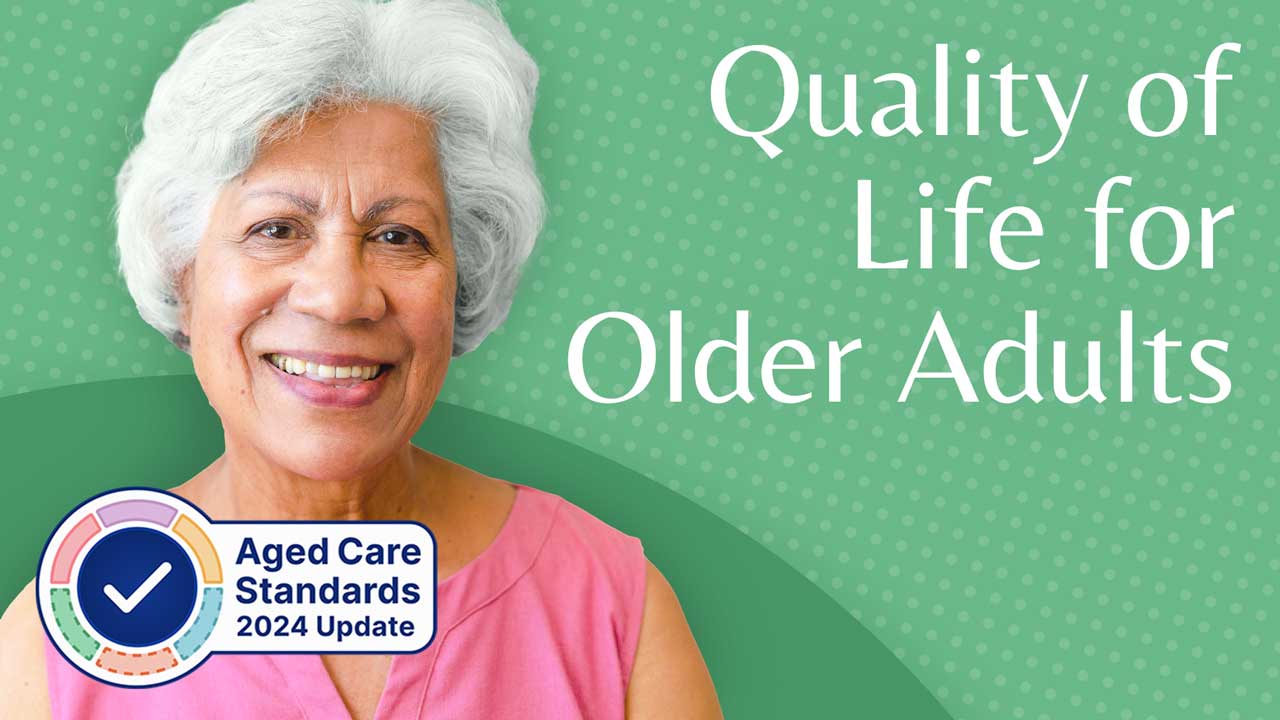Quality of Life for Older Australians
Published: 04 April 2024

Published: 04 April 2024

The term quality of life is multidimensional and highly subjective. At a basic level, it describes the ability of an individual to be healthy and comfortable and participate in life events (Jenkinson 2024).
In healthcare, quality of life comprises emotional, physical, material and social wellbeing (Jenkinson 2024).
Quality of life is an essential concept in the strengthened Aged Care Quality Standards.
Under Standard 1: The Person - Outcome 1.3: Choice, independence and quality of life:
(ACQSC 2024a)
Under Standard 3: Care and Services:
(ACQSC 2024b)
Standard 4: The Environment highlights how the service environment’s maintenance and design can improve quality of life (ACQSC 2024c).
Standard 5: Clinical Care discusses how appropriate, effective clinical care can optimise an older person’s quality of life (ACQSC 2024d).
Standard 6: Food and Nutrition recognises the importance of food, drink and the dining experience on older people’s quality of life (ACQSC 2024e).
Under Standard 7: The Residential Community - Outcome 7.1: Daily living (Action 7.1.1), older people should be supported to participate in activities of their choosing to maintain their quality of life (ACQSC 2024f).
As stated, quality of life is a broad and subjective concept that depends upon an individual’s perceptions, values and goals. In aged and home care settings, quality of life can mean:
(COTA 2018 Australia; Stefanacci 2024)

It is also important to be aware that a client’s values and perspectives are not static and may change over time (Stefanacci 2024).
In addition to understanding and providing what clients require in order to maintain quality of life, it is also important to identify factors that may adversely affect their quality of life. These factors may not necessarily be anticipated before they arise (Stefanacci 2024). Examples include:
(Stefanacci 2024; Browning & Thomas 2013)
The subjectivity of an individual’s quality of life means that no single model can be used to assess it. Properly understanding someone else’s perspective requires a thoughtful conversation wherein the person can express their preferences (Stefanacci 2024).
Older people experiencing cognitive impairment should also have an avenue through which to express their thoughts, even if that means using simple questions or inviting family members to participate in the conversation (Stefanacci 2024).

(ACQSC 2023)
Providing care that facilitates quality of life means older people should feel like they have adequate control, privacy and the ability to contribute to their own lives; simply offering opportunities is not enough on its own without providing the ability for choice (ACQSC 2023).

Question 1 of 3
True or false: Facilitating a high quality of life means giving clients the ability to make choices.